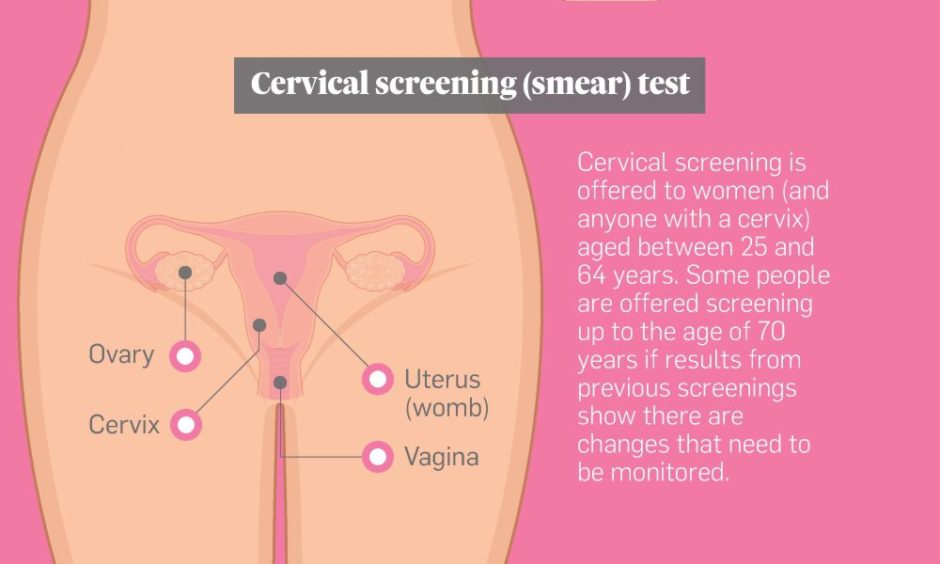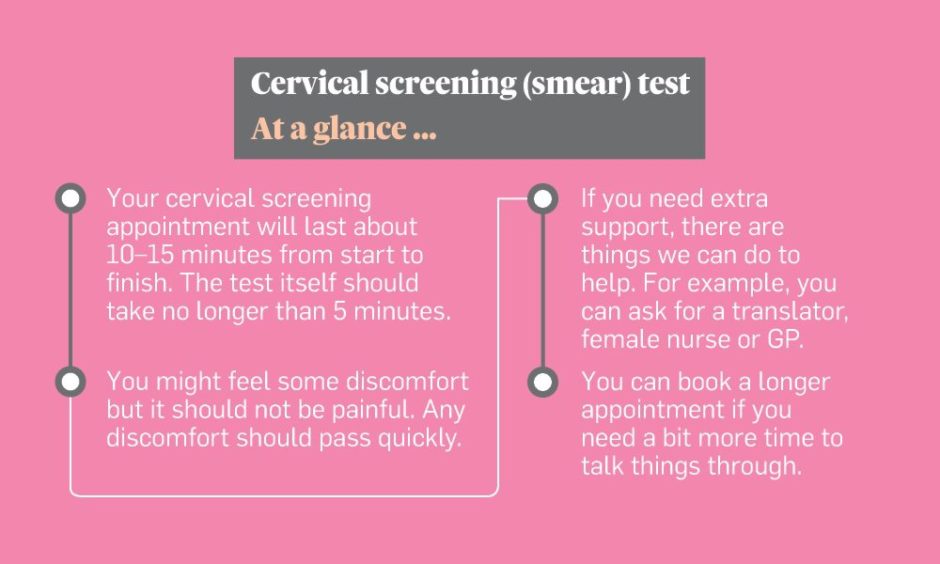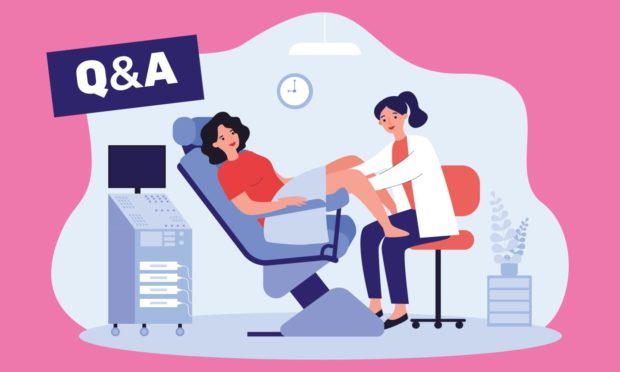This week marks Cervical Screening Awareness Week, with women and people with a cervix being encouraged to have a conversation about the importance of smear tests.
Many find getting invited to their smear test a nerve-racking experience, but we’ve broken down the most frequently asked question to help ease anxieties.
What is cervical screening?
The cervical screening test (smear test) is a free health check, as part of a national screening programme. It helps prevent cervical cancer.
A sample of cells is taken from the cervix (neck of the womb) by your GP or a practice nurse and sent to a laboratory to be checked for HPV.
If nothing is found, you will be called to be checked again in five years’ time.

Why is screening important?
Dr Shantini Paranjothy, consultant in Public Health for NHS Grampian, said: “Cervical cancer is the most common cancer in women aged 25 to 34 in Scotland.
“It is a very slow-growing cancer usually without any symptoms early on.
“The test is an effective and accurate way of finding out if you’re likely to develop cervical cancer later on.”
Attending cervical screening regularly can stop cervical cancer before it starts.
Who is screening for?
If you are aged between 25 and 64 and registered as female at your GP practice, you will be called every five years.
Your invitation will come in the post so make sure your address is correct.
You can book your appointment as soon as the letter comes through.
In March 2020, HPV testing was introduced into the cervical screening programme in Scotland.
HPV testing is a more sensitive and effective test than the previous test that was used for identifying women who are at risk of cervical cancer.
Women who don’t have HPV will therefore be invited for a cervical screening test every five years instead of every three years.
Where do I go for it?
Cervical screening is carried out at your GP practice and you can request a female nurse or GP to do your test. The results will be sent to you by letter.

I’ve had the HPV vaccine, do I still need to go?
Even if you’ve already had the HPV vaccine, it is important that you still come for screening as the vaccine doesn’t protect from all types of cancer.
❓ Did you know #CervicalScreening looks for #HPV, the human papillomavirus?
This #CervicalScreeningAwarenessWeek we want you to know the facts about HPV to understand what it is and how it is linked to cell changes and cervical cancer (1/6) ⬇️ pic.twitter.com/dwZQyiJwxu
— Jo's Cervical Cancer Trust (@JoTrust) June 15, 2021
What are the benefits?
- Cervical screening is not a test for cancer but aims to pick up any changes early.
- Finding changes at an early stage means they are easier to treat and can prevent cancer from developing.
What about risks?
- Cervical cancer is very slow-growing and has no symptoms early on.
- Sometimes screening can give an incorrect result which could result in tests or treatment you don’t need.
- Sometimes changes can be missed.
What if I’m trans?
The process is a little different for people who have changed their gender.
If you’re a trans-woman you:
- won’t have a cervix
- aren’t at risk of cervical cancer
- don’t need to attend for cervical screening
You’ll be automatically invited if you’ve changed your CHI number to reflect your female gender after June 14, 2015.
However, you won’t need to be screened as you don’t have a cervix. If this applies to you, contact your GP.
You won’t be invited if you haven’t changed your CHI number to reflect your female gender.
Trans-men, who still have their cervix (entrance to the womb from the vagina), are at risk of developing cervical cancer and are eligible for cervical screening.
You’ll be automatically invited if you haven’t changed your CHI number to reflect your male gender.
Additionally, if you’re a trans-man and have had a total hysterectomy you:
- won’t have a cervix
- aren’t at risk of cervical cancer
- don’t need to attend for cervical screening
You’ll be automatically invited if you haven’t changed your CHI number to reflect your male gender on or after June 14, 2015. However, you won’t need to be screened as you don’t have a cervix.
If this applies to you, contact your GP.
You won’t be invited if you’ve changed your CHI number to reflect your male gender.
Screening can reduce cervical cancer risk
Dr Paranjothy added: “Going for screening when invited can reduce these risks and is the best way to protect against cervical cancer. Testing for HPV should prevent these risks.
“You can opt-out if you decide screening is not for you; speak to your GP. You can always opt back in later on if you change your mind.
“If you missed your last appointment or are unsure if you are due to be screened contact your GP.
“Cervical screening is not for people who have symptoms; please speak to your GP.”
To find out more about cervical screening go to NHS Inform.
